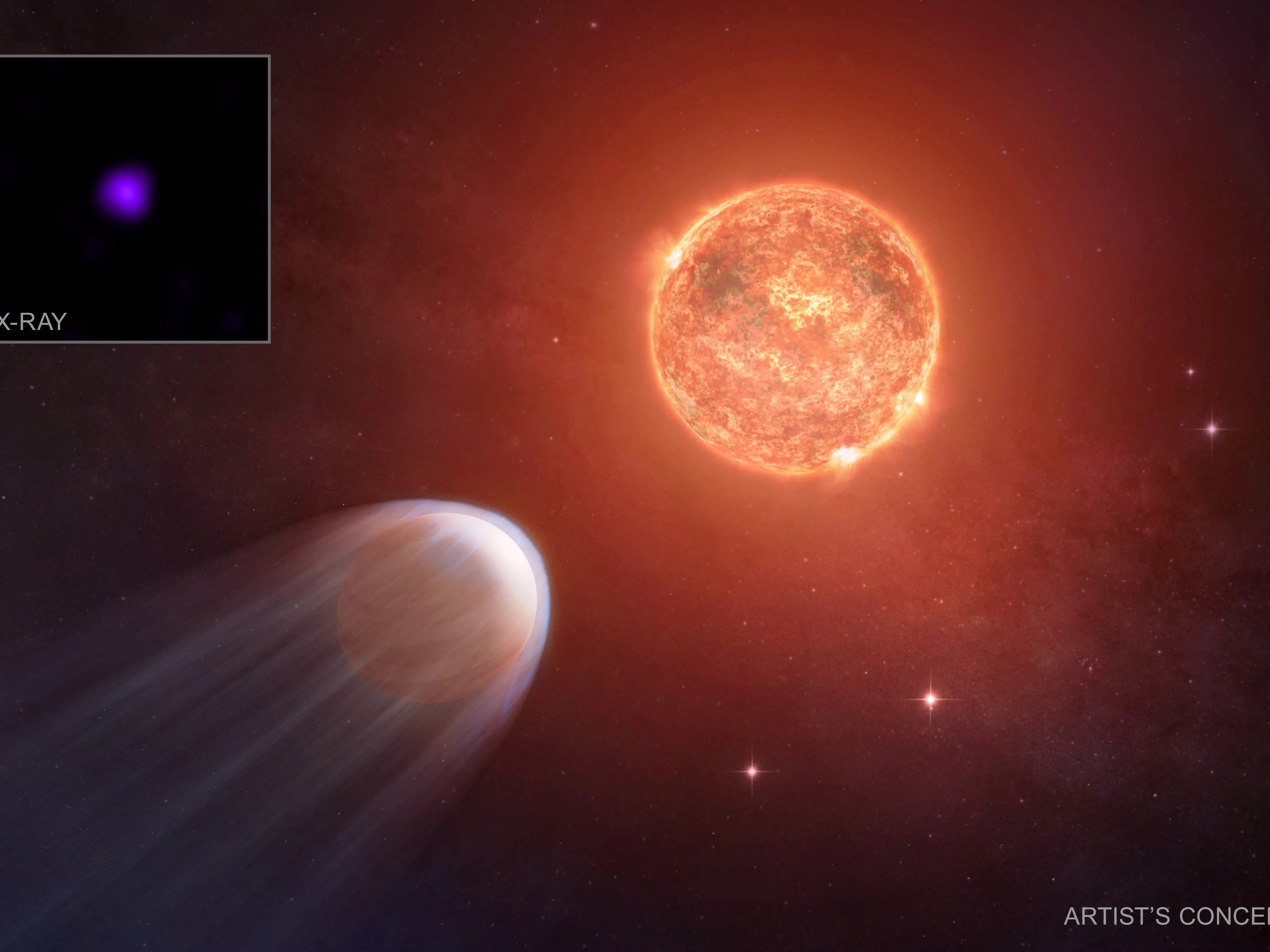NASA Unveils Shocking Transformation of a Baby Planet: Will It Survive?










2025-07-24T00:02:32Z

Imagine a planet, just a toddler by cosmic standards, being ripped apart by its own star! That's the jaw-dropping discovery made by astronomers using NASA’s Chandra X-ray Observatory, who have unveiled the unbelievable fate of a ‘baby’ planet named TOI 1227 b. At a mere 8 million years old, this planet is facing a catastrophic transformation, losing its atmosphere at a staggering rate due to relentless X-ray bombardment from its host star.
TOI 1227 b, located about 330 light-years away from us, is currently puffed up to the size of Jupiter, despite having a mass more akin to Neptune. It’s difficult to fathom the horror unfolding on this young world, as its atmosphere is unable to cope with the intense, destructive radiation it receives. According to Attila Varga, an astronomer at the Rochester Institute of Technology who led the study, “The planet’s atmosphere simply cannot withstand the high X-ray dose it’s receiving from its star.”
What makes this situation even more alarming is the fact that TOI 1227 b is orbiting its red dwarf star at a distance even closer than Mercury is to our Sun. While this star might be cooler in visible light, it’s a different story in X-rays, where it shines brightly and aggressively. The research team estimates that the planet is losing mass at a rate of about 1 trillion grams per second — that’s 10¹² g/s! No wonder co-author Alexander Binks from the Eberhard Karls University of Tübingen remarked, “The future for this baby planet doesn’t look great.”
As if that weren’t enough, scientists predict that in roughly one billion years, TOI 1227 b will have completely lost its atmosphere. It is projected to shrink down to about one-tenth of its current size, evolving into a small, barren planet that will be utterly inhospitable to any form of life. The fate of TOI 1227 b serves as a stark reminder of the harsh realities of our universe, where beauty and violence often coexist in a delicate balance.
 Thomas Fischer
Thomas Fischer
Source of the news: Notebookcheck